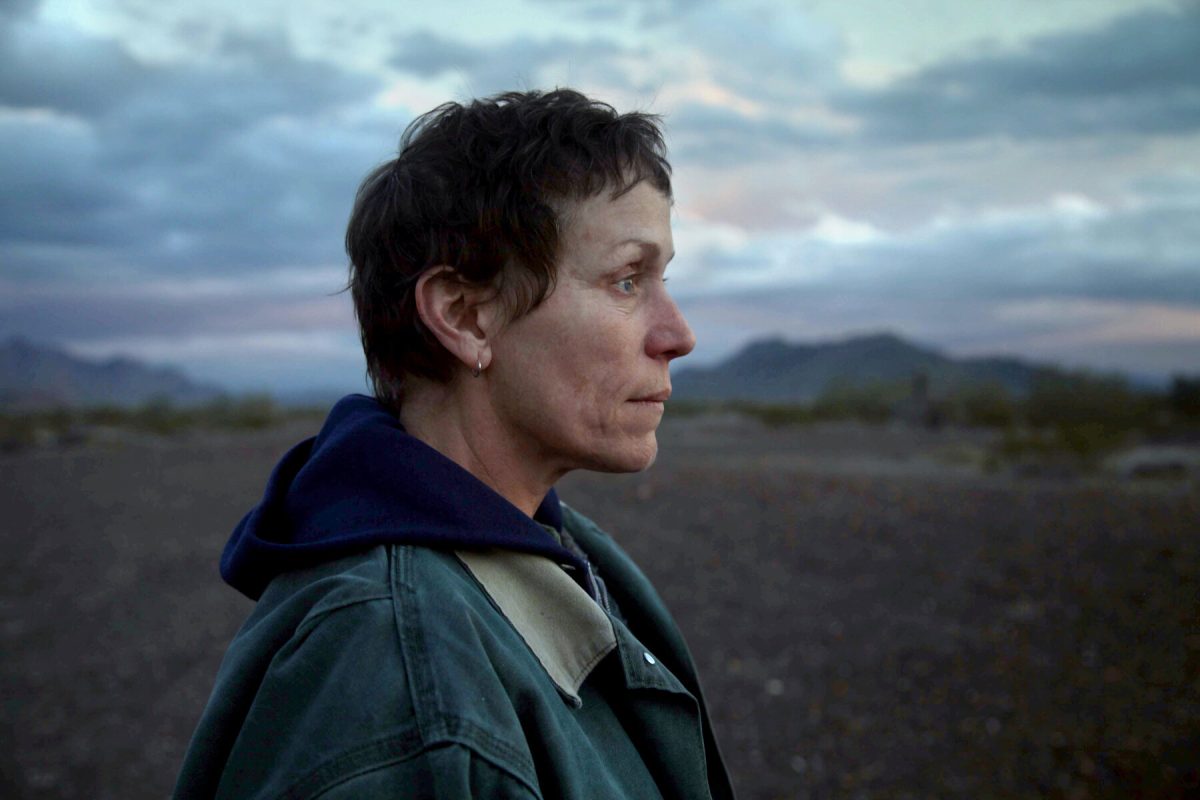Photo courtesy of The New York Times
Chloe Zhao just became the first female Asian director to win a Golden Globe for her film “Nomadland,” and for good reason. It has a unique pace, beautiful scenery throughout and a great plot, one that moves forward with subtlety. At the end of the film, audiences and characters alike come full circle.
At its core, “Nomadland” is about living a limitless life, beyond the confines of a stationary home. It follows Fern, a nomad living in her van. The film takes audiences through the different connections she makes and has made in her life. Throughout, the movie alludes to various contemporary points in politics: healthcare, the 2008 financial crisis, the effects of war on someone and how rugged individualism can shape the way one lives life. There is a great tension within the movie between the natural wish of humans to connect with nature and community and the demands of corporate and industrialized America.
On top of both the closely personal moments and the storylines of the negative effects of the Western world and capitalism, there are also glimpses into what makes the personal moments worth it and the plights of capitalism so unbearable. Scenes like this include Fern sitting on an ocean shore, an old man singing in a bar about friends who have passed and show clips of rivers and the desert. They help viewers latch onto the experiences within the movie as if they were as real as their own lives.
One of the most engaging aspects of “Nomadland” is the fact that it stars an older woman. Not only that, but it stars an older woman who does not live a particularly glamorous life. It’s very difficult to find representation of older women in pop culture and media. Often, older women are not seen as meeting industry standards. Furthermore, older women in film often have nonexistent wrinkles, and their narratives often rely on their families. They are normally a tool to propel the story, not be the story themselves.
For Fern and her friends, none of these things are true. Fern is a single, older woman with no children. The film’s use of close-ups of Fern and other older women in the story makes it impossible to ignore their imperfect skin. In a scene of a conversation about growing old and thinking back on life between Fern and her friend Swankie, the close-ups of the two illustrate signs of aging. Not only are wrinkles not removed, but they are used to characterize these two women and humanize their stories.
A woman’s story doesn’t end when she turns 30, or when she has kids or when she gets married. Some women do not make all of those milestones or even have those goals to begin with. Fern does not have normal goals by her sister’s standards, or likely by an average viewer’s standards. Her story is unique to herself and the lifestyle of a nomad. However, the gripping reality shown by the film allows viewers to see a piece of themselves expressed in Fern and the people around her.
The most disappointingly realistic moment in “Nomadland” is at the end, when Fern returns to work at Amazon to pay for her van and other expenses. The beauty of the film also lies in this realism. Viewers are encouraged to become intimate with the mundane, as the movie gets at some points uncomfortably close to the reality of nomad living.







